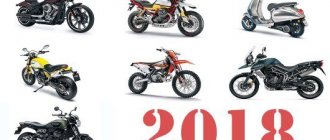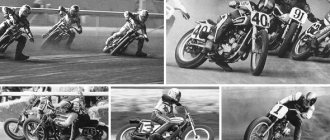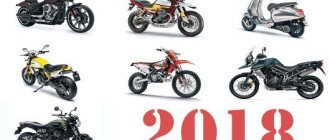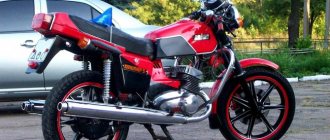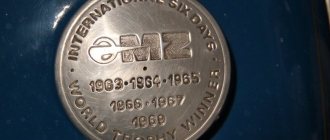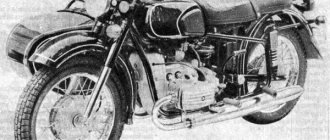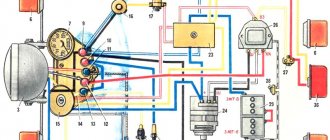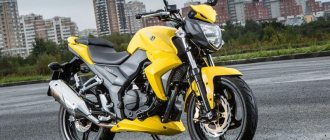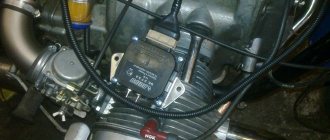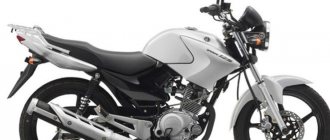Motorcycles are easier to upgrade than cars because their design is simpler and lighter than a four-wheeled vehicle. There are many varieties of two-wheeled bikes on the modern market, ranging from city models to racing versions. But of particular interest are the motorcycles of the future, which use nanotechnology and extraordinary solutions, including the creation of flying modifications. Let's consider the most daring and interesting ideas.
Motorcycles of the future
Recently, it has become very fashionable to switch from a car to a motorcycle. There are, of course, many reasons for this - starting from the clumsiness of four-wheelers in dense city traffic and ending with the fact that a motorcycle gives much more emotions from driving in general. Technologies also do not stand still; manufacturers are racing among themselves to try to surprise customers as much as possible and attract them to their side.
The direction of conceptual development received special attention from motorcycle giants, and every year we can see a huge amount of futuristic equipment that seems to have arrived to us from the future. We decided to present to your attention our top 10 futuristic motorcycles.
Concept from BMW
The original prototype is a motorcycle of the future from BMW under the HP Kunst brand. Also, another concept presented by French designers may come to life, like Motorrad. It is worth noting that this is an exception to the rule, since the development of new machines with modern filling is a huge amount of work carried out by entire departments of specialists. The BMW concern, by tradition, never ceases to amaze with the number of concepts that are distinguished by their special chic and “coolness”.
No less well-known companies also have good bikes that will be released in the foreseeable future:
- Aprilia (Italy) does not present prototypes very often, but it knows how to surprise.
- Harley Davidson produces the motorcycles of the future in its signature style.
- The Japanese one presents a lot of sketches of future two-wheeled cars. One of these is the Honda V4.
BMW Motorrad Vision 100
The German company BMW recently demonstrated the Motorrad Vision Next 100 concept. This model reflects the company's development trends in the foreseeable future. Virtual glasses instead of a helmet, smart clothing and balancing without a stand: only these 3 innovations can already become the basis for the bikes of the future.
The Motorrad Vision Next 100 does not need a stand - a special system keeps it balanced both while driving and at rest. The motorcycle gains additional maneuverability, which makes control safe for the driver.
The visor (safety glasses) display is informative and easy to use. When the rider looks up, rear visibility is revealed. If he looks down, a menu will open with a map indicating the chosen route.
Racing clothing provides protection from the elements. The A/C function either cools or heats the rider depending on the climate. Vibrating elements on the arms and legs of the clothing provide navigation signals when deviations occur in the route.
Let's summarize
If you think that the considered new products with nanotechnology are very far from reality, remember modern cars and motorcycles, as well as electric cars, which were “a novelty” 10 years ago. Among modern concepts, many modifications are already being tested and refined. Flying analogues are unlikely to appear very soon. On the other hand, in Japan and some other countries, unmanned taxis are being tested. It will not be surprising if the “air version” is adopted. In any case, the era of new motorcycles is just around the corner.
Concepts of other brands
Below is a list of equally fantastic devices:
- The motorcycle of the future, the photo of which is shown above, is called Detonator Motors. It’s not for nothing that this original concept is called a “space machine for humanoids.”
- Hyundai Concept Motorcycle. The designers of this motorcycle tried to give it maximum aerodynamics, and therefore equipped it with a semi-closed fairing, shifting the balance to the front wheel. Thanks to this design, the bike turned out to be beveled forward.
- Hyanide. This device is more like a snowmobile and is equipped with tracks. German designers combined, by and large, all types of technology in their prototype. This all-terrain vehicle can travel on any off-road terrain, regardless of the terrain.
- The Hamann Soltador Cruiser bike is created in the best styling characteristic of the German design school. It has a power unit with a capacity of 160 horsepower.
- The motorcycle of the future, painted in a steel chrome style, called the Dodge Tomahawk, is considered one of the fastest two-wheeled cars. The 500 horsepower engine reaches a speed of about 675 km/h. About $100 million was spent on developing the “monster.” A total of ten units were assembled by hand, the price of each was 550 thousand dollars, and they sold out like hot cakes.
- Suzuki Biplane combines innovative technology and trendy design. The designers say that the concept of the new product echoes the biplanes of the formation of the nation.
- A striking example of the transformation of a designer's imagination into highly efficient technology is the Honda Rune. Its power is 106 horsepower.
- Not long ago, a Travertson Motorcycles machine appeared in the USA, which is equipped with an engine and transmission unit from a Harley V-Rod. The power indicator is 125 “horses”. The design and “filling” pleased the most sophisticated bikers.
Suzuki Falcorustyco
The Suzuki Falcorustyco concept motorcycle was first unveiled at the Tokyo Motor Show in 1985. Although the Falcorustyco was a high-tech dream bike for designers at the time, Suzuki was going to create a prototype that would be impossible to copy anytime soon.
The Falcorustyco did not have a frame like a regular bike. Front and rear swing arms were attached to a 500cc square four-cylinder engine. The RG500 gamma engine was the latest water-cooled four-stroke powerplant with 16 valves and 3 camshafts.
The reverse gear was not chain, belt or shaft like other motorcycles. Suzuki decided to use hydraulic pumps that transfer the driving energy to both wheels. The brakes were electromagnetic and the suspension was electric.
Journalists were convinced that Falcorustyco would go into mass production in the near future. However, a new model called Gyrfalcon was released by Suzuki in 1999 and became a regular motorcycle with a chain drive, 2 camshafts, conventional brakes and steering. Naturally, Falcorustyco could be put into mass production, but then the question would arise about its cost and the difficulty of purchasing it for ordinary drivers.
Akira Bike
Akira is a Japanese animated film. Its main character is a guy named Kaneda, riding a specific motorcycle around the world that survived the third world war. Japanese engineer Masao Teshima created the prototype of this futuristic bike. He spent 7 years and $121 thousand on his invention.
The result was a long, low-slung motorcycle. This low center of gravity invention makes it possible to accelerate and stop faster than conventional motorcycles. The bike also has a higher top speed potential and better fuel economy.
Ecosse ES1 Spirit
The concept with this name was developed by Formula 1 engineers. When creating it, the masters set themselves specific tasks: reduce weight, reduce drag, increase power, and achieve proper weight distribution. At the same time, they achieved weight reduction due to the fact that they decided to create a motorcycle that does not have a frame. The Ecosse ES1 Spirit has not been put into mass production and this will not happen in the future.
Saline Bird concept
The author of this electric bike is student designer Simon Madella. He was guided by the moto record holder Peugeot 515, which became famous back in the 30s of the last century. The developer claims that he wanted to create a concept for motorcycles of the future, imbued with the spirit of racing, aimed at overcoming existing records for speed, reliability and endurance.
Often, alternative engines become a major theme in superbike development. For example, there are examples when designers presented two-wheeled vehicles running on compressed air, which is quite difficult to imagine. Moreover, some projects have already been recreated in metal. In the case of the Saline Bird, we are talking about a carbon fiber body. Approximate parameters, not to mention the exact characteristics, have not yet been announced. However, the designers assure that it is quite possible to bring the prototype to life, and there is no reason not to believe them.
Motorcycle concepts have one wheel in two worlds: the real and the unreal. There are 10 more motorcycles in line, teetering on the edge of common sense.
Killinger und Freund Motorrad. In the 1930s, design had absolutely no restrictions. Want a streamlined motorcycle? Please! Do you want an engine mounted in the front wheel? No problem! Want all this in one bottle? With Killinger und Freund Motorrad you would have it! Killinger und Freund, like all great designs, was very much an answer to a question that no one asked. The project began as an attempt to improve the front-engine Megola motorcycle without a clutch or transmission. Apart from the red paint, Megola wasn't very pretty. Killinger und Freund set out to fix this. Considering that it was 1935, when all aerodynamics were done “by eye,” Killinger und Freund was essentially a beautiful “piece” of pure style. The first step was to get a new engine. The motorcycle was equipped with a lightweight air-cooled 3-cylinder unit (this time with a clutch and two-speed transmission). Again, everything was packaged into the front wheel, making replacing most components a breeze: you just took it off. The design looked very harmonious. Even the tires were protected with mudguards. Like many pre-war projects, Killinger und Freund never made it to mass production. Only a few prototypes were built. After the war, American soldiers found a lone prototype near Munich and took a bunch of photos, because that's what anyone lucky enough to find such a magnificent motorcycle lying in the smoking ruins of post-war Europe would do. It is unclear what happened to the motorcycle afterwards. According to some rumors, the motorcycle ended up in the USA as a trophy, according to others, it returned to Germany to be lovingly restored...
Ecosse ES1 Spirit. By limiting air resistance, increasing power and playing with the physics of weight distribution, the former Formula 1 engineers planned to make the ES1 the best sportsbike in history. A magical frameless motorcycle from the future (already the past) was equipped with a transversely mounted 4-cylinder engine with a power of more than 200 hp. With. Unfortunately, the Ecosse ES1 Spirit never materialized.
Yamaha Motobot. Are you ready for robots to take over the world? Yamaha is ready. She brought a robot motorcyclist to the 2015 Tokyo Auto Show, put him on an R1M sportbike and forced him to demonstrate all his riding movements. If you're not impressed, listen to what the robot said to his nemesis, MotoGP superstar Valentino Rossi:
I improve my skills every day, but I'm not sure I can beat even five-year-old you. Maybe if I find out everything about you, I can catch up. I am not human. I'm a motorcycle bot. And I was created to surpass you.
Suzuki Falcorustyco. Using Falcorustyco as an example, Suzuki wanted to show that all their crazy technologies will be commonplace in 10 years. And guess what? This did not happen... The fact is that Falcorustyco had at its disposal such things as electromagnetic brakes and all-wheel drive, implemented using a hydraulic pump. To put it mildly, the technical requirements are not very easy to meet. But overall the design turned out incredibly beautiful...
Tryton MM2. An electric motorcycle with a power reserve of 212 km. Acceleration to 100 km/h in 4.4 seconds. Maximum speed – 257 km/h. Well, to hell with it all... Just look at him!
Sbarro Orbital Wheel. In the late 80s, Franco Sbarro reinvented the wheel and introduced a series of motorcycle prototypes without a central hub. Not the best concept, but definitely the strangest!
Hope. Could you imagine that you might like something that looks like a toaster on wheels? Check out this unique electric motorcycle created by a guy who calls himself "The Shiny Hammer." The artwork is definitely weird, but that's what you'd expect from concept or custom electric motorcycles and scooters. Like their four-wheeled brethren who have gone this route before, they want to stand out from the gas-burning crowd, and awkward design is the most obvious way to stand out. This motorcycle was named Hope. You'll be even more surprised to hear what inspired Shiny Hammer (aka Samuel Aguiar) to create this masterpiece. He quotes the classic Porsche 356, the iPhone and, no less, Pokemon. We don't know about you, but we would love to see the steps involved in creating such a design. Some of the hallmarks of this famous Porsche are definitely present here. All those smooth, rounded surfaces are a clear reminder of that era and even harken back to the first attempts at setting speed records on two wheels. True, Hope will not strive to break these records. It borrows mechanical parts from the VectrixVX-1 electric maxi scooter, meaning it can reach a speed of up to 120 km/h and a range of 274 km. It's not that fast, but you don't want that bike to flash past you in a second. You want to admire the aluminum body or the rounded arch above the steering wheel with gauges and headlight. “I wanted to create a design that you would want to hug, without any aggressive shapes,” says Aguiar. Well, we're not sure you'd want to hug the toaster, especially if it's on and the seat looks terribly uncomfortable. But this is an object of art, a sculpture designed to please the eye. Although Samuel disagrees: “The bike is very smooth and relaxed. Most of the time you can ride it without a brake - just by turning the right handle in both directions. Control is very easy, the motorcycle stands confidently on its wheels. Because he's quiet, people pay attention to him a lot more than if he were loud, and you hear them talk about it, it's very funny. Riding a motorcycle at night will make you feel like ninjas, which I love very much.” Well, if Samuel is so happy, then perhaps we can put up with this uncomfortable seat and everything else.
Bandit9 AVA. The creation of Daryl Villanueva under the impressive name Bandit9 AVA will awaken the melancholic feelings that you have long buried in the depths of your soul. “Car design is not what it used to be. Everything I see on the streets today is lifeless. If you look back 60 years to the jet age, it was a time when cars, trains and planes symbolized progress. We took risks. We landed on the moon. We broke the sound barrier. We were making history,” Daryl commented. After these words, the motorcycle shone in a completely different light. Suddenly, echoes of the past, glorious in their simplicity, came back to life. One of the signature features that accompanies all Bandit9 motorcycles is a strong connection to modern art, and the AVA is no exception. The bike has a completely hand-crafted unibody metal body that integrates the fuel tank, seat cup and tail section, and is complemented by an X-shaped front fairing where the headlight would have been. The light comes from two miniature projectors mounted on the right side of the fork, which adds even more sophistication to the motorcycle. The forks and exposed springs get a silver finish, as do the frame, swingarm, engine and exhaust. Daryl sand cast the swingarm and fabricated custom mounts for the dual rear shocks. The LED taillight, turn signals, steering wheel, speedometer and exhaust system are all made by Bandit9.
Zec00. From the outside it seems that the Japanese auto industry takes inspiration from anime. This is partly true. However, some examples, in addition to the crazy excess of style, have another useful property: they have a reliable power unit. Take a look at this futuristic Zec00 motorcycle. It took Zec00 more than 4 years to go from concept to production model. In the process, the Japanese team struck a deal with California-based Zero, one of the few electric motorcycle manufacturers that actually makes anything. The purpose of the transaction was the battery, engine and related components. The motor is the same time-tested 50-kilowatt unit installed on the top-end ZeroSR. This implies 144Nm for a 280kg bike. The maximum speed is stated at 160 km/h. The 11.4 kWh lithium-ion battery provides a range of 160 km in mixed driving mode. Recharging is as slow as on Zero motorcycles - about 8 hours from a 110 V source. But such is the price of an electric motorcycle! There are not even enough epithets for the style of the motorcycle, but the front suspension deserves attention. The steering is connected to a vertical double frame, which allows the center of gravity to be shifted and the weight of the battery to be balanced without much impact on handling. He is, of course, not a master at making turns, but still...
Lazareth LM 847. Meet the latest monster from Ludovic Lazareth - a motorcycle whose power is offset only by its wild and impractical nature. This is an incredible masterpiece of engineering. The epicenter of this, so to speak, vehicle is the Maserati engine - a 4.7-liter V8 with a power of 470 hp. With. and torque 620 Nm. In practical terms, this means that the Lazareth can burn rubber in any gear and at any speed. As for the transmission, everything is simpler than you think. The LM 847 is equipped with a single-speed gearbox with a fluid coupling and a final drive with a double chain, that is, acceleration to infinity occurs without shifts. This can be either a plus or a minus depending on who is operating the throttle. The Lazareth LM 847 has twin-wheel center hub steering based on the Dodge Tomahawk principle. Frankly speaking, it is difficult to find any other technological solution when working with such engines, so originality is hardly the main criterion here. The tail section is from a Ducati 1299 Panigale. Not everyone will like the original reverse controls on the steering wheel. This motorcycle has a complex suspension system that leans it when cornering. Braking is handled by dual 420mm Brembo discs and 8-piston Nissin calipers at the front and dual 255mm discs and 4-piston calipers at the rear. Levers and mirrors – Rizoma. The wheels are equipped with Michelin PowerCup Pro tires. With a total weight of 400 kg, Lazareth has an amazing power-to-weight ratio. We would like to see the suicides who will ride it...
Lotus C-01
Lotus Cars Ltd is an English manufacturer of sports and racing cars based in Hethel. The Lotus C-01 is a collaboration between former Volkswagen designer Daniel Simon and the Kodewa racing team.
Subsidiary Lotus Motorcycles has released a teaser image of the bike, made from carbon fiber with the Lotus logo and a racing livery in black and gold. The company describes it as a hyperbike with built-in racing technology.
The Lotus C-01 is made from carbon, titanium and aerospace grade steel. Engine specifications remain a mystery, although Lotus claims around 200 hp. The black and gold pays tribute to iconic racing models of the past, such as the Lotus 49, which became the designer's main source of inspiration.
